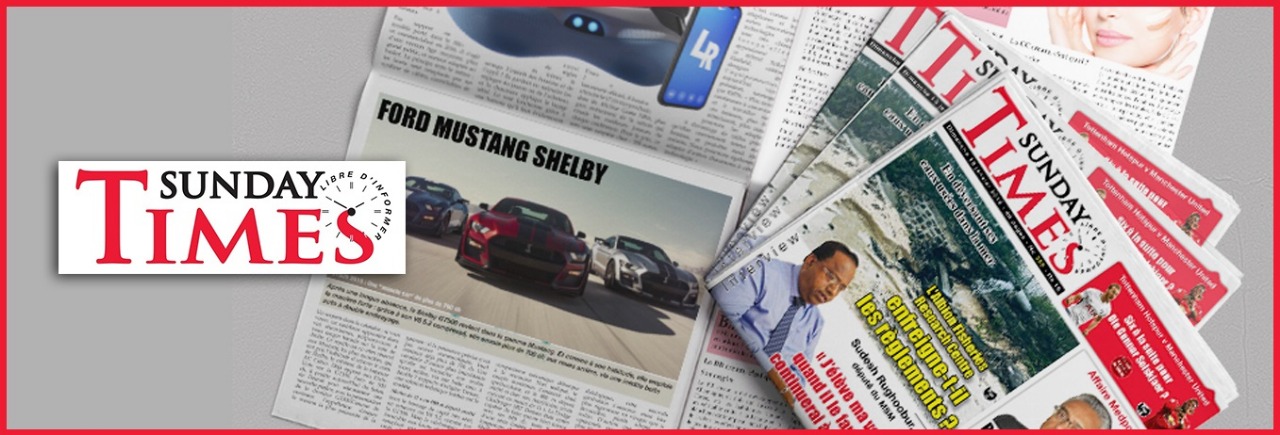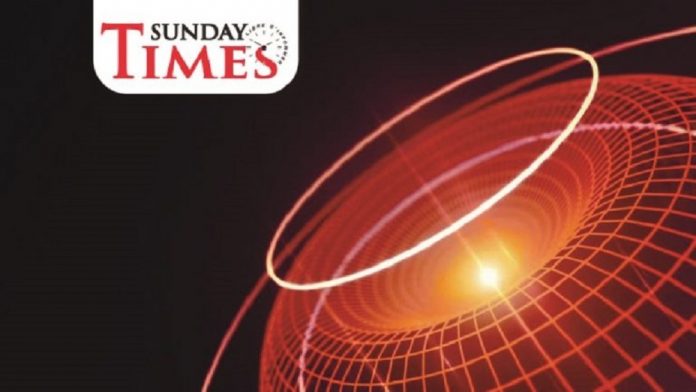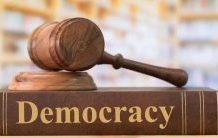DNA (ADN)
DNA stands for DeoxyriboNucleic Acid, a very complex molecule. DNA is the code of life, the means by which every living organism on Earth stores its genetic information.
You get half of your DNA from each of your biological parents, and you will pass on a selection of half of it to any child you might conceive.
There is a lot of DNA packed in every human cell. Our three billion bases, which are more than 99 per cent the same as everyone else’s, need to be packaged neatly. The coiled strands of your DNA are thus organised into chromosomes. Humans usually have 46 CHROMOSOMES in each cell, 23 from each parent. The number varies in other animals: fruit flies have only eight and the black mulberry plant has 308, for example.
In fact, all humans are 99.9 per cent identical, and of that tiny 0.1 per cent difference, 94 per cent of the variation is among individuals from the same population and only six per cent between individuals from different populations. Those tiny differences in DNA can provide enough information to identify the geographic ancestry of individual men and women from the major regions of the world, namely Africa, Eurasia (Europe, the Middle East, Central and South Asia), East Asia, Oceania and the Americas. Whether we Mauritians are Creole, Indian, Chinese, General population, Franco-Mauritian or Islander, we all belong to the SAME species, 99.9% similar. These facts fully support the UN Universal Declaration of Human rights (Article 1: ‘All humans are born free and equal in dignity and rights’) but not at all the communalism (in Africa ‘tribalism’) which has been used by some political parties for electoral purposes.
What makes DNA so amazing is that it can copy itself, which allows all known organisms to function, grow and reproduce. Each strand of DNA in the double helix can serve as a template for duplicating its sequence of bases, enabling new cells to be exact copies of existing ones – although mutations often occur as a result of small errors in this process.
DNA contains only four bases adenine (A), guanine (G), cytosine (C) and thymine (T). So to speak 4 letters: A, T, C and G are used to ‘write’ the genetic code of ALL living things on Planet Earth. The sequence of the nucleotides along the backbone encodes genetic information. The four roles DNA plays are replication, encoding information, mutation/recombination and gene expression.
Because everyone’s DNA is unique – except for identical twins – it can be used to identify people, which is why Police collect samples of blood, saliva or hair and the like at crime scenes.
Apart from encoding your physical features, DNA can also reveal some of your risk for certain medical conditions. However, other factors like your diet and habits also affect those risks.
In recent years, at-home DNA testing services have enabled people to carry out genetic “spit tests”, the results of which can tell them more about their ancestry and origins.
——————————————————
TRANSMISSION Of KNOWLEDGE (NOS SAVOIRS) ; Of SKILLS (NOS SAVOIRS- FAIRES, TECHNOLOGIQUES et ARTISTIQUES)
Traditionally parents, elders at home and in the community, as well as in organised clusters (schools) have been the main transmitters of knowledge and skills. History and books were and still are major repositories of knowledge, skills, art and literature. But innovation/invention always occurred, when the learner imagines, explores and tries new/different ways of doing things, of explaining phenomena as different from what he was taught. This can work for simple things or major explanations (most people believed in the 15th century that the earth was the centre of the universe and that the sun, stars and moon circled around us. Then Galileo and other thinkers using reason as well as instruments (such as the newly invented telescope) disagreed. We are just one small planet…. you know the rest….
Schools today (at all levels) are following modern pedagogies, of group learning, of use of the practical discovery method of learning, in short of learning by doing.
But increasingly the young generation learn from peers (their friends of the same age) and use ICT technology (internet, search tools, Face book and other social media, WhatsApp etc). The evolution of technology itself, that of computers, smart phones, satellite data etc has transformed communication patterns and instant and worldwide availability of news and data.
—————————————
TRANSMISSION Of CULTURE (NOS SAVOIRS VIVRES, NOTRE ETHIQUE) ; OF LEADERSHIP.
Transmission is not just genetic: it’s cultural, agricultural, industrial and technological, artistic, literary, political and institutional.
In this December 2019, one theme transcends all our pre-occupation, that of GOVERNANCE, for the period 2020-2024? The main question is this: how can the enormous progress we have made since 1968 (from SSR to Anerood/Pravind) be transmitted to the next generation in a usable and beneficial way, how can these acquis be PRESERVED and most importantly how (with the active participation of the next generation of Mauritians) can they be FURTHER DEVELOPED.
But this development must be within the carrying capacity of our environment, within our resources, within world economic and environmental laws (for example the UN SDG 2015-2030) and in full respect of ethics and morality.
————————————-
TRANSMISSION OF BELIEF (NOS CROYANCES)
Mauritius, mini-united nations, has the incredible good fortune to have all the major religions of the world represented, co-existing peacefully and with knowledge and respect for each other.
The problem of transmission over one generation (20 to 40 years) is small compared with the durability of the main religions of the world. Hinduism has existed for 4,000 years, Buddhism for 3,000 years, Judeo Christianity for 2,000+2,000 years, Islam for 1,400 years. All religions consider children as our greatest resource; families with loved and well-brought-up children are the basis of civilization. Parents have the primary responsible for the upbringing of their children, and each child has the right to love, food, shelter, security, clothing, medical care, and education
While the essential teachings, core beliefs, of all religions are immutable and are not subject to change (such as the lesson that there is only ONE GOD), the practices may evolve over generations. Take for example the reforms made by the Catholic Synod which replaced the traditional language of worship- Latin- by the local language of each community’s (here Kreol, French, English). With huge increase in participation of the faithful and a real factor in not ‘loosing’ the young generations.
Similarly, the main sacred books (Bible, Koran, and Vedas) have been translated into many languages, precisely for ease of transmission.
A fundamental belief which has ensured our survival on planet earth is one in nature, in mother earth and the need to protect it. The planet and its inhabitants have been experiencing the impacts of climate change and global warming in many different ways. Hurricane Dorian hit the Bahamas and caused massive destruction, stronger than our own destructive Carol, Claudette and Gervaise.
The global climate system is directly connected to oceans and the cryosphere through the exchange of water, energy, and carbon and the spike in greenhouse gas emissions over the last two centuries has distorted this system (IPCC, 2019). It is estimated that 90% of the extra heat caused by higher greenhouse gas emissions have been absorbed by oceans, affecting both the lives under water and the climate system as a whole. A significant decline of glaciers, snow, ice and permafrost has been observed in higher regions. This process has led to the release of massive amounts of water and to sea level rise at an alarming rate (World Wildlife Fund, 2019).
The Earth’s natural resources were not created by individuals or countries, they do not belong to any one individual or group, but they should be considered common property and heritage of humanity. To be protected and utilised rationally (rational utilisation means using the growth let’s say of a fish resource or a forest, NOT destroying it for immediate profit).The environmental movement (for which this author has been a student of and a fighter for since 1972) finds great support from religions. Be it the Buddhist philosophy of respect for nature and for all living things, to the recent defence by Pope Francis for the Amazon (one of the 5 lungs of the world) which is being burnt and deforested for ‘destructive interests’ and which must be protected.
Threat to many ecosystems directly impact the lives of more than 1.2 billion people in mountainous regions (for instance the Himalaya, the Andes or the Alps) and low-lying coastal zones across the globe (such as coastal zones include cities with large populations like Jakarta, Cairo or Mumbai and large river deltas such as the Nile and Mekong. Another 65 million people live in small island developing states such as the Dominican Republic, Vanuatu, Maldives or Mauritius and 4 million are located in the Arctic region (IPCC, 2019).The consequences of climate change are felt by millions of people that live from these fragile ecosystems and are vulnerable to weather extremes, in the case of Mauritius, and the islands of Indian and Pacific Oceans and the Caribbean, these are cyclones, tsunamis, unstable climate and coastal erosion.
Dr Michael ATCHIA



![[Khutbah – La Réflexion du Vendredi] Tawakkul, la confiance absolue en Allah (swt)](https://sundaytimesmauritius.com/wp-content/uploads/2025/06/Tawakkul-218x150.jpg)

![[Poetry corner] In memory of my friend Swabir Goodur](https://sundaytimesmauritius.com/wp-content/uploads/2025/04/CASAM-218x150.jpg)

![[Khutbah – La Réflexion du Vendredi] Le vrai sens du sacrifice](https://sundaytimesmauritius.com/wp-content/uploads/2025/06/35b68025-aaa6-4d40-b861-7da6153dc56b-218x150.png)
![[Journée Internationale des Huissiers de Justice] Un moment de partage et de réflexion](https://sundaytimesmauritius.com/wp-content/uploads/2025/06/9625ca75-0d96-4e4d-8c3e-4bafcb0298a9-150x150.jpg)
![[Contrat de Rs 30 milliards à MMG] L’ancien directeur général de la STC arrêté et libéré sous caution](https://sundaytimesmauritius.com/wp-content/uploads/2025/06/stc_1_5-e1750058191663-150x150.jpg)
![[Accusé de ‘Conspiracy’] Un sergent de police dans la tourmente](https://sundaytimesmauritius.com/wp-content/uploads/2025/06/Mauritius_Police_Logo_003_cropped-1-150x150.jpg)

![[Journée Internationale des Huissiers de Justice] Un moment de partage et de réflexion](https://sundaytimesmauritius.com/wp-content/uploads/2025/06/9625ca75-0d96-4e4d-8c3e-4bafcb0298a9-100x70.jpg)
![[Contrat de Rs 30 milliards à MMG] L’ancien directeur général de la STC arrêté et libéré sous caution](https://sundaytimesmauritius.com/wp-content/uploads/2025/06/stc_1_5-e1750058191663-100x70.jpg)
![[Accusé de ‘Conspiracy’] Un sergent de police dans la tourmente](https://sundaytimesmauritius.com/wp-content/uploads/2025/06/Mauritius_Police_Logo_003_cropped-1-100x70.jpg)